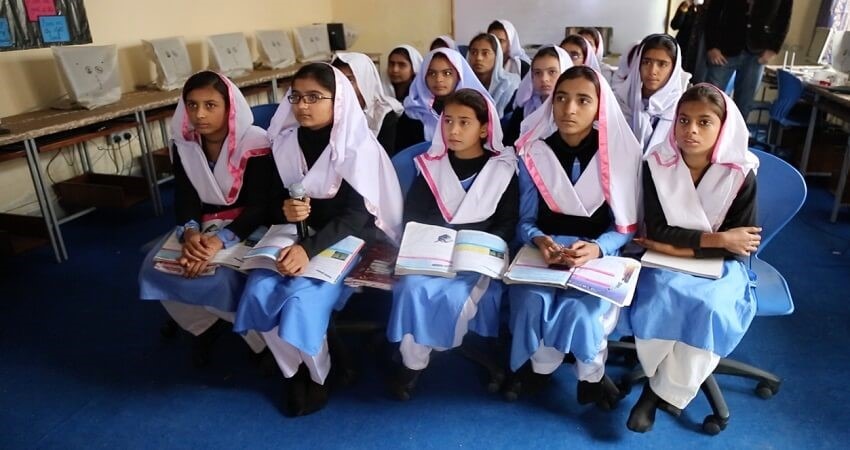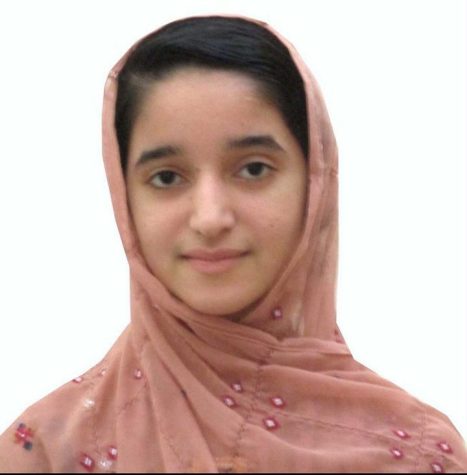Schooling System in Pakistan
February 15, 2023
Being an exchange student in the US, the first question that I am asked by almost everyone I meet is, “How does the education system in your country work?” Or, “How is it different from the school system in the US?”
Schooling in Pakistan is way different than the schooling system in the US, and this article is for anyone who wants to know more about the schooling system that I have experienced in my country.
One of the biggest differences is the diversity of schools in the US. Schools everywhere have diversity, but I didn’t realize the diversity of schools around the world until I finally flew out of the country. In Pakistan, the school grades are still based on age, but nearly everyone looks similar and share many Pakistani cultural and historical similarities. In the US, though, students come from many different cultures within and outside of the US. You would not see that in any classroom back home.
Unlike the US, schooling in Pakistan is mainly divided into two sections. One section is about religious education, which is called “Madrasas;” the other section is modern education. In the Madrasa, kids are taught the Holy Quran, other holy Islamic texts, and Islamic ways of living. However, modern schools are either formed and sponsored by the Government (public sector schools) or run by an individual (private sector schools).
Another difference between the school systems is that Pakistan starts from nursery, then progresses to kindergarten and then grade 1 to 10. We sometimes have elementary and middle schools separated, but most of the time it is just school from nursery to grade 10. Public sector schools have one huge building for all the grades nursery to 10th. They provide the cost of your textbooks and other school equipment. Additionally, we have school uniforms, and our learning is mostly bound with textbooks only. All public schools have the same school uniforms. The uniforms for the private schools differ from each other. In Pakistan, we don’t use chromebooks or have other digital learning methods in our schools.
Like the public schools in the US, they have English as the learning language, and teach classes of Spanish or French. The learning language in the public schools in Pakistan is Urdu, our national language. There is only one English book taught to students helping them learn the basics of English. Subjects like science, history and Islamic studies are taught in Urdu. Urdu, Pakistan Studies and its history, and Islamic Studies are mandatory subjects in all schools. There are no electives in Pakistani schools.
However, in the private sector schools, students have to pay a certain amount of fee monthly or annually to get enrolled. The cost of books and other school materials are not included in the school fee which means you have to pay for those separately. The salary of the teachers and staff and the cost of school building are all paid through the fee students pay. Sometimes, private schools get funds from the government or other organizations, but it is not the same for all private schools. The learning language in the private schools is English. There is one English book taught to students which is either grammar or fictional. And all other subjects like Science, Math, History, and Islamic Studies are taught in the English language. Some private schools also have computer classes, but most other schools teach drawing instead of computer science because of the lack of computers and teachers in that field.
Children are enrolled in school from the ages of 5 to sixteen. Many children attend preschool before age 5 to get ready for school. In grades Nursery to 1, most schools teach only 3 basic subjects; Science, Maths and English. After grade 1, the curriculum extends into Science, Maths, English, Islamic and Social Studies. The public schools teach the textbooks provided by the government, and they are taught in Urdu. The textbooks in private schools are from the Oxford edition until grade 8th. After grade 7th, private sector schools are supposed to teach textbooks that are made in that province. The Science textbook is divided into Biology, Chemistry and Physics. Apart from the examinations held by the private sector schools, each government of the provinces hold an examination for overall matric students. All students in the country are supposed to pass the examination held by the institute of secondary education of that province. In order to pass that, students must study the required textbooks.
For grades 9 and 10, students also must pass the examination before going to college. After you pass grade 10, it means that you have done your matriculation and you are done with school. However, there are private schools in some major cities where students can do O’ levels. O’ levels is the same degree as matriculation except for that it is provided by the University of Cambridge, and students can choose their subjects based on their interests. But not all students have the opportunity to do O’ levels because it is expensive and is not available everywhere in the country.
Unlike the US, in Pakistan, we have the same classmates throughout the year and different teachers come and teach us their subjects. Teachers don’t have their own classrooms, but our schools have two staff rooms for male or female teachers who sit there when working or free.
Students in college attend 11th (1st year) and 12th (2nd year) grade. There are public and private colleges, which means public colleges are free for all citizens. Some students also attend Bachelor’s programs which are 13th (3rd year) and 14th (fourth year). But most of the students after college go to Universities to attend different programs of either 4 or 5 years of education to master in that field. After you are done with your masters, you wait for your degree and then have a graduation ceremony. We don’t have graduation ceremonies after school or college.
Schooling is very different in the US. From my personal experiences, I believe the education system in the US is a lot easier than the education system in Pakistan. We don’t have electives, which makes it hard for a lot of students to take classes that they may not be interested in; however, the diversity in the schools around the globe is what creates the difference.


